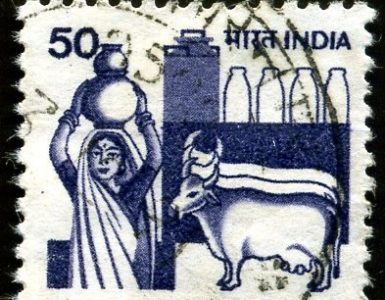Anne Matilainen & Merja Lähdesmäki
Food consumption increasingly raises ethical questions amongst contemporary consumers. These concerns are related, for instance, to animal welfare and negative environmental effects of food production. Particularly conventional meat production has received criticism concerning the living conditions of animals as well as the contribution of the production methods to greenhouse emissions and climate change. Consequently, the demand for more ecologically and socially sustainable food is acknowledged as one of the leading consumer trends at the global level.
Expanding organic production is one means to mitigate food related ethical concerns, including animal welfare issues. Accordingly, the European organic meat products market is experiencing a strong growth as, for example, the production of organic beef, mutton and pork meat is increasing.
Another option for more sustainable meat consumption is hunted wild game meat. Indeed, according to recent studies, consumers perceive game meat as more ‘green’ when compared to farmed meat. Furthermore, free roaming and following their natural grazing behavior is often associated with meaningful life for the animals (see Matilainen et al. 2021).
Hunted wild game meat does not only provide an option for environmentally sustainable livestock system but wild game meat is also considered to retain high nutritional values with a low fat and cholesterol content. While consumers’ increasing health awareness is one of the predicted consumer trends globally, hunted wild game meat may appeal to modern consumerswhen purchasing meat products. Furthermore, from an environmental point of view, there is also an ecological “surplus” of hunted wild game meat. In many countries, it is a necessity to control overgrown game populations in order to avoid damages to fields and forests as well as to avoid traffic accidents. Thus, to some extent hunted game meat is a side product of wildlife management aiming to control damage. In the Finnish context, an example of this kind of game is the European moose (Alces alces), which is the most significant game animal concerning meat provision.
In Finland, moose hunting is strongly embedded in rural traditions and based on a specific hunting culture. The hunting rights belong to landowners, often private non-industrial forest owners, who make the decision whether to allow hunting or not. According to rural tradition, forest owners typically rent their forests as hunting areas for local moose-hunting clubs, free of charge or for nominal compensation.
In addition to the permission from landowners, each hunting club must purchase a license from the State. Game management authorities annually estimate the number of licenses that can be sold to the hunting clubs in various regions to ensure the ecological sustainability of hunting. Accordingly, 58 000–65 000 moose are shot annually, which leaves the winter population at 60 000–80 000 animals.
Moose hunting has traditionally been a joint activity of the whole rural community and local moose-hunting parties still play a significant role as one of the last remaining social communities in rural areas. Strongly rooted social practices and norms typically dictate the ownership of game meat. These norms are often based on close social proximity between landowners, hunters, and local residents.
While the annually hunted moose in Finland equals 8.1–8.5 million kg of meat, less than 2 percent of this ends up in commercial markets. Thus, currently it is challenging for consumers to purchase moose meat unless they have close personal contacts to the hunting clubs. But what kind of perceptions do consumers hold in relation to moose meat in the first place? Here, we examine Finnish consumers’ perceptions of moose meat and compare them with the perceptions they held of chicken meat. The consumption of chicken meat in Finland has significantly increased during the last decade, thus representing a rather common and mundane protein in Finnish diets.
Hunted wild moose meat vs. chicken meat – consumers’ perceptions
To analyse consumers’ perceptions on the moose meat, an e-survey was conducted in the autumn 2018 (n=199). It was targeted to the consumers that have registered to the food panel of the organization implementing the e-survey. Thus, they were potentially more attuned to food related issues than typical consumers. Consumers’ perceptions of moose meat were measured by using 13 food meaning -constructs that were based on the work of Renner et al. (2012) and Januszewska et al. (2011).
These attributes were taste, health, convenience, affect regulation, tradition, sociability, price, naturalness, societal norms, appearance, weight management, ethicality and impression management. Affect regulation measures whether certain food brings joy and positive feelings to consumers. Sociability, on the other hand, refers to how well consumers estimate the food material to fit to be offered on social occasions. Societal norms describe how socially acceptable consumers consider the food material to be and, finally, impression management in turn estimates whether certain food is considered to bring social prestige to consumers.
A similar survey was also conducted concerning consumers’ perceptions of chicken as food (n=201). Chicken is one of the most popular meat choices in Finland. However, the ethics of chicken meat production has been challenged widely due to the production conditions. Thus, it was considered as a relevant comparisn with moose meat. Consumers’ opinions on chicken and moose meat are summarized in figure 1.

Figure 1. The food meanings associated with moose and chicken. *) construct measured with one item. Valuation of the food meaning -construct 1= low, 6= high.
The differences in the consumers’ perceptions on moose and chicken meat were statistically significant, except for three food meaning -constructs: taste, sociability and impression management. According to the results, consumers’ perceptions on chicken meat seem to be fairly high. Only with regard to tradition, ethicality and naturalness, was moose meat valued more positively than chicken meat.
The biggest factors in favouring chicken meat were convenience, price and weight management. These findings are unsurprising, as chicken meat as “white meat” has been highlighted as lighter meat alternative when compared, for example, with pork or beef. Furthermore, because obtaining moose meat often necessitates hunting oneself or having close connections to the moose-hunting club, it is no wonder that chicken meat was perceived as cheaper and more convenient.
Interestingly the perceived ethical issues involved in chicken production did not seem to impact on impression management or sociability. There were no statistical differences between the two forms of meat concerning these food meaning -constructs. Nevertheless, moose meat was clearly seen as a more natural and ethical meat choice and thus, it could potentially be seen as being of interest to those consumer groups that emphasise ecological and ethical food choices. According to Matilainen et al. (forthcoming) nearly 70% of the Finnish consumers would be interested in moose meat availability as a food product. However, only 34% of the respondents reported currently having access to it.
Resenting hunting but valuing game meat?
One issue influencing consumers’ perceptions on game meat is their opinion on hunting. Game meat is typically harvested through hunting and consumers’ attitudes towards it can be very controversial. Negative attitudes towards hunting are increasing in many countries, especially among consumer groups that otherwise value ecological and ethical food choices. At the same time, slightly paradoxically, research has found that game meat is valued as food also among non-hunters with negative attitudes towards hunting in general (Matilainen et al., forthcoming). The results of this study support these findings.
When consumers’ perceptions were analysed based on their attitudes towards hunting (negative, neutral and positive), even respondents with negative attitudes towards hunting valued moose meat fairly highly, although their perceptions were lower than those with positive attitudes towards hunting. The differences between the groups were statistically significant except concerning impression management, tradition, price, affect regulation and convenience constructs. Thus, there may be consumer groups that are interested in moose meat, but have a less positive attitude towards hunting in general (see figure 2).

Figure 2. Consumers’ perceptions on moose meat based on their attitudes towards hunting. *) construct measured with one item. Valuation of the food meaning construct 1= low, 6= high.
This interesting mismatch raises also a question whether the public acceptance of hunting could be increased if the benefits of hunting, i.e. game meat, would be made available to non-hunters. Expanding the supply of wild game meat to urban non-hunters has, indeed, been proposed as a way to maintain and increase support for hunting and wildlife management. More particularly, the role and significance of enhancing the general availability of wild game meat in increasing the acceptance of hunting has been found to be even greater than that of social relationships and having friends or family members who hunt (Ljung et al., 2012). Furthermore, this impact appears to be similar in both rural and urban contexts, even though consumers’ access to game meat is typically greater in rural areas.
Traditional hunting culture as an obstacle in increasing the hunted meat consumption?
In Finland, moose meat is very difficult to find in shops, as the commercialization of moose meat is as yet undeveloped. The selling the meat by hunting clubs has both cultural and operational obstacles. According to the hunting traditions in Finland, the moose meat is considered to be the property of the hunters who participate in the moose hunting. As the landowners typically lease the moose hunting rights to the hunters for free or against a very nominal compensation, the hunting clubs are very careful in commercializing their hobby. They are afraid that this would cause conflicts with the landowners and jeopardize the moose hunting rights granted to them.
At the same time, the hunting clubs do sell moose meat occasionally in order to build or improve their club’s facilities or cover the costs of hunting licenses. Thus, the hunters feel entitled to have the costs of their own recreational activity covered by selling the meat. Presently, however, selling to consumer markets is rare and is not part of the Finnish hunting cultural norms.
Moose hunting culture in Finland has traditionally been based on close social proximity between the local hunters, landowners and residents. Due to the general demographic changes in rural areas, an increasing number of landowners and hunters are not as tightly connected to rural societies as was once the case. Almost a half of both groups now live in urban areas, far away from their hunting grounds or land property. Thus, critical voices have been raised concerning the legitimacy of the current hunting practices and speculation regarding who has the right to economically benefit from the value of moose meat. Is it the landowner, who bears the costs of wild roaming moose or the people living in rural villages surrounded by moose?
Even though it seems that commercial markets for moose meat exists, the broader commercialization of moose meat faces significant social challenges. Indeed, commercialization would require significant changes in the traditional hunting culture and the social meanings attached to moose meat (Matilainen and Lähdesmäki, 2021).
References
Januszewska, R., Pieniak, Z., and Verbeke, W. (2011), “Food Choice questionnaire revisited in four countries. Does it still measure the same?” Appetite, 57, 94-98. https://doi.org/10.1016/j.appet.2011.03.014
Ljung, P. E., Riley, S. J., Heberlein, T. A., & Ericsson, G. (2012). Eat prey and love: Game‐meat consumption and attitudes toward hunting. Wildlife Society Bulletin, 36(4), 669-675. https://doi.org/10.1002/wsb.208
Matilainen, A., & Lähdesmäki, M. (2021). Who does the moose belong to?–Legitimation of collective psychological ownership. Journal of Rural Studies, 86, 236-246. https://doi.org/10.1016/j.jrurstud.2021.05.014
Matilainen, A., Luomala, H., Lähdesmäki, M., Viitaharju, L. & Kurki, S. (2021) Resenting Hunters, but Appreciating the Prey? – Identifying Moose Meat Consumer Segments. (Manuscript submitted for a publication)
Renner, B., Sproesser, G., Strohbach, S., & Schupp, H. T. (2012). Why we eat what we eat. The Eating Motivation Survey (TEMS). Appetite, 59(1), 117-128. https://doi.org/10.1016/j.appet.2012.04.004

Anne Matilainen (PhD) is a researcher at the University of Helsinki Ruralia Institute. Her research interests are sustainable use of natural resources, nature tourism, wildlife and psychological ownership of natural resources.

Merja Lähdesmäki (PhD) is a senior researcher at the University of Helsinki Ruralia Institute. Her research is focused on sustainable business, business ethics and ecological and ethical consuming.
Header Image Credit: Metal Moose by Henry Söderland
TO CITE THIS ARTICLE:
Matilainen, Anne & Merja Lähdesmäki 2022. ‘Hunted wild game meat – sustainable option for meat consumption?’ Discover Society: New Series 2 (1): https://doi.org/10.51428/dsoc.2022.01.0002




